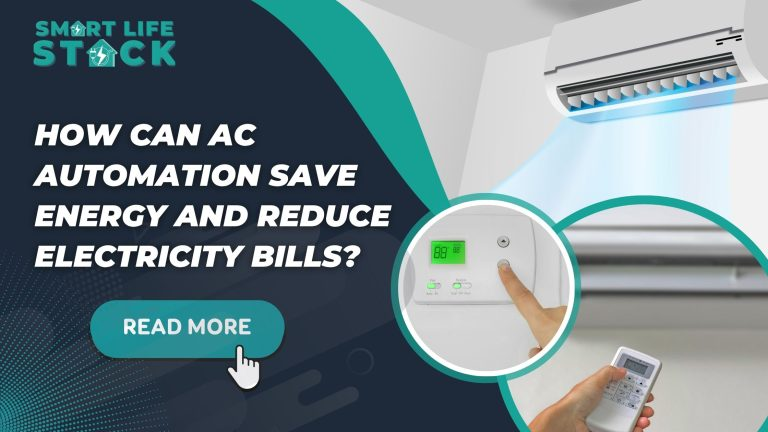In the time of increasing prices of electricity prices, saving energy is crucial, and automation in AC controls is one of the most effective ways to save energy and reduce power bills.
Smartlifestack smart home is an effective means for a user in managing, scheduling, and monitoring AC, light, and curtain automation usage; hence, there is enhanced comfort and energy savings simultaneously.
What is AC Automation?
Automation of AC is part of the smart living system, providing you with opportunities to use a mobile device-either your smartphone, tablet, or even your voice assistant-for automatic air conditioning control. Program your unit for automatic on/off at given times, change temperatures remotely, and more while keeping tabs on energy consumption.
How does the automation of ACs work?
Smart Sensors and Thermostats
Room occupancy may be detected by temperature sensors and motion sensors that automatically shut off the air conditioning when the rooms are not occupied, or adjust cooling based on outside temperatures.
Remote Control and Scheduling
With these smart AC gadgets, customers have the liberty to manage the cooling appliances via their mobile phone apps or by giving voice commands. In certain situations, the features may also set timers by which the room is cooled before the user’s arrival or the device is automatically switched off at sleeping time.
Smart Home System Integration
Ac Automation incorporates smart house systems like Alexa, Google Assistant, and SmartThings; this enables the operation to be conducted hands-free or on one device.
Top Ways AC Automation Saves Energy
1. Smart Temperature Control
They automatically adjust for your comfort preferences, keeping optimal temperatures without your inputs: cooling less during the day because you want it cooler at night.
2. Motion and Occupancy Detection
When the areas it oversees aren’t showing any movement, it will automatically switch into either low-power mode or even completely turn itself off to save energy.
3. Real-time monitoring
With intelligent systems, power consumption information is available in real time to help track energy use and find out what habits to break for electricity conservation.
4. Automated Schedules
This would prevent waste and reach efficiency on the basis that the implementation of daily or weekly schedules for air conditioning should be bound to certain operating times.
Benefits of AC Automation
Energy Savings
Automation minimizes the consumption of power by avoiding overuse and through efficient cooling.
Cost Reduction
One will ultimately have to pay fewer electricity bills if energy consumption is reduced.
How to Get the Most Energy Out of the Device
- One can achieve the highest levels of both comfort and money-saving if one
- The thermostat temperature is set between 24°C and 26°C.
- Besides, it is quite a sensible step to close windows and doors while the AC is in operation so that the cold air does not get wasted, and hence the efficiency will be at a higher level.
- By renewing the air filters, you not only do better unit maintenance, but you also let more air flow easily.
The Future of AC Automation
In times to come, ACs will get even smarter with the integration of AI and IoT. They can predict your comfort preferences, instantly react to voice or motion, and even connect with renewable energy systems such as solar panels. Companies like Smartlifestack are taking a lead role in innovating for home efficiency and eco-friendly living.
Conclusion
AC automation has nothing to do with living modern; it has to do with living smartly and sustainably. The integration of smart AC, sensors, and options for remote control may therefore result in reduced energy consumption and lower electricity bills. Solutions like Smartlifestack will let you feel just the right mix of comfort and control, along with cost savings, and go a long way in contributing toward a greener planet.


